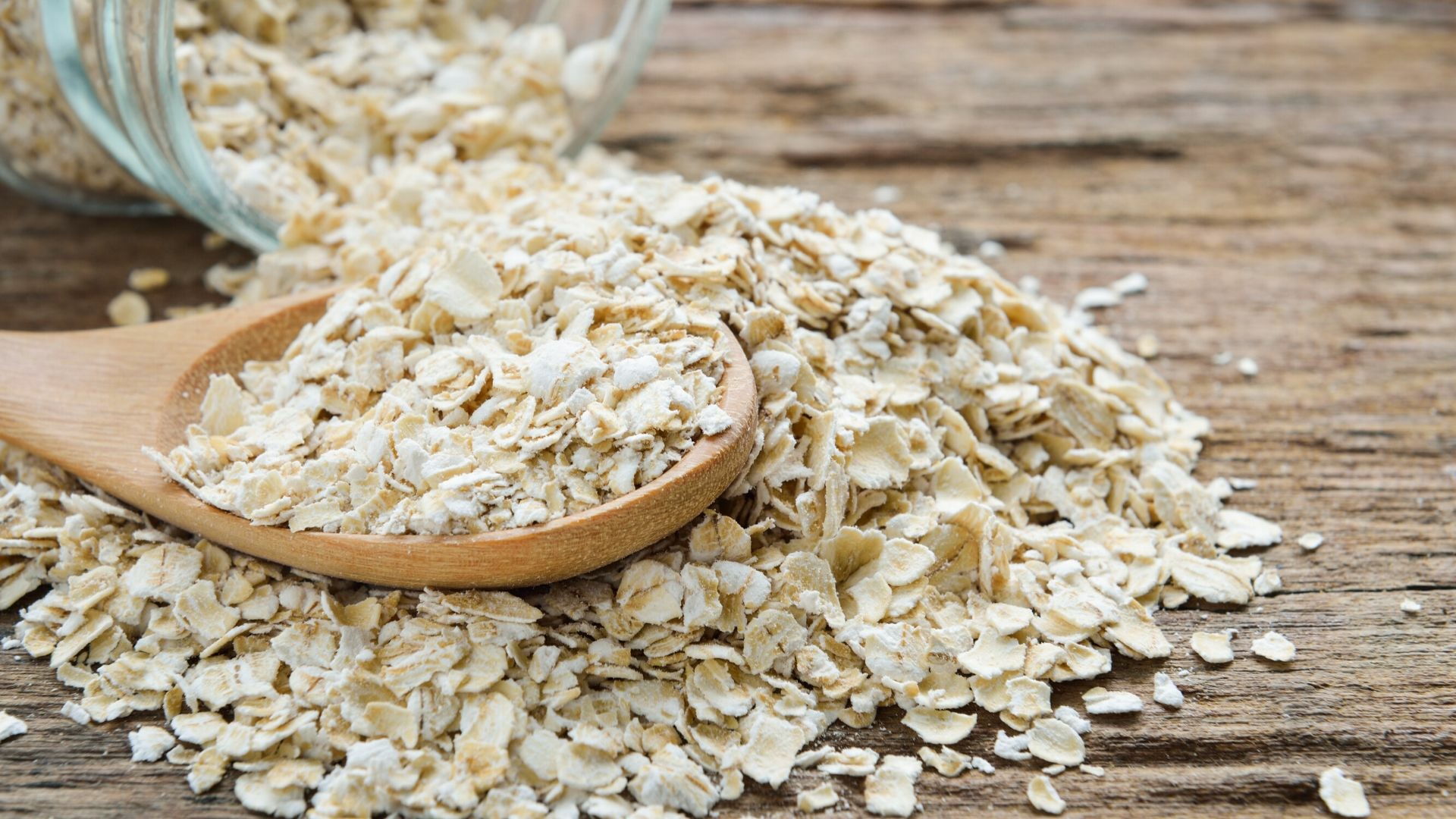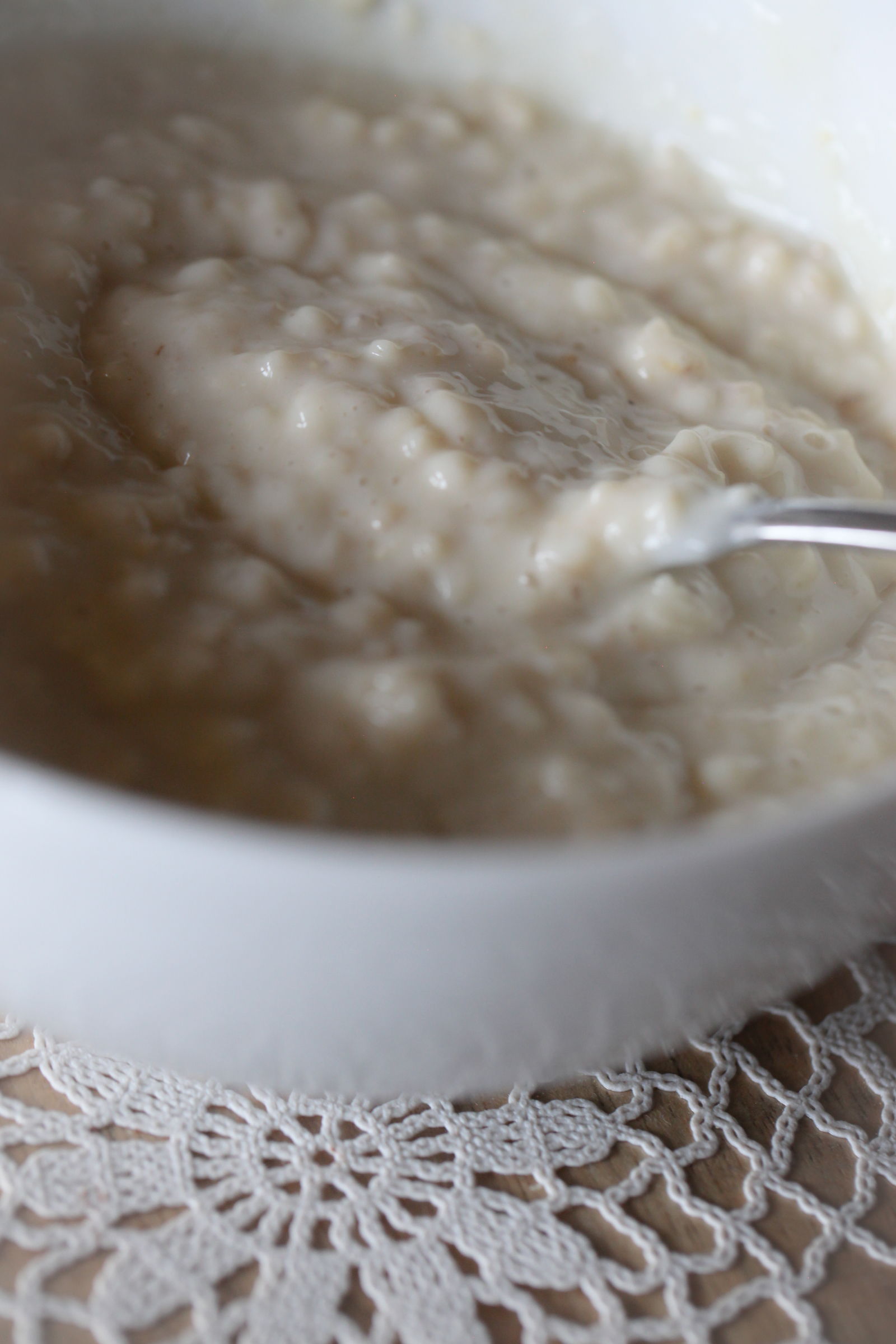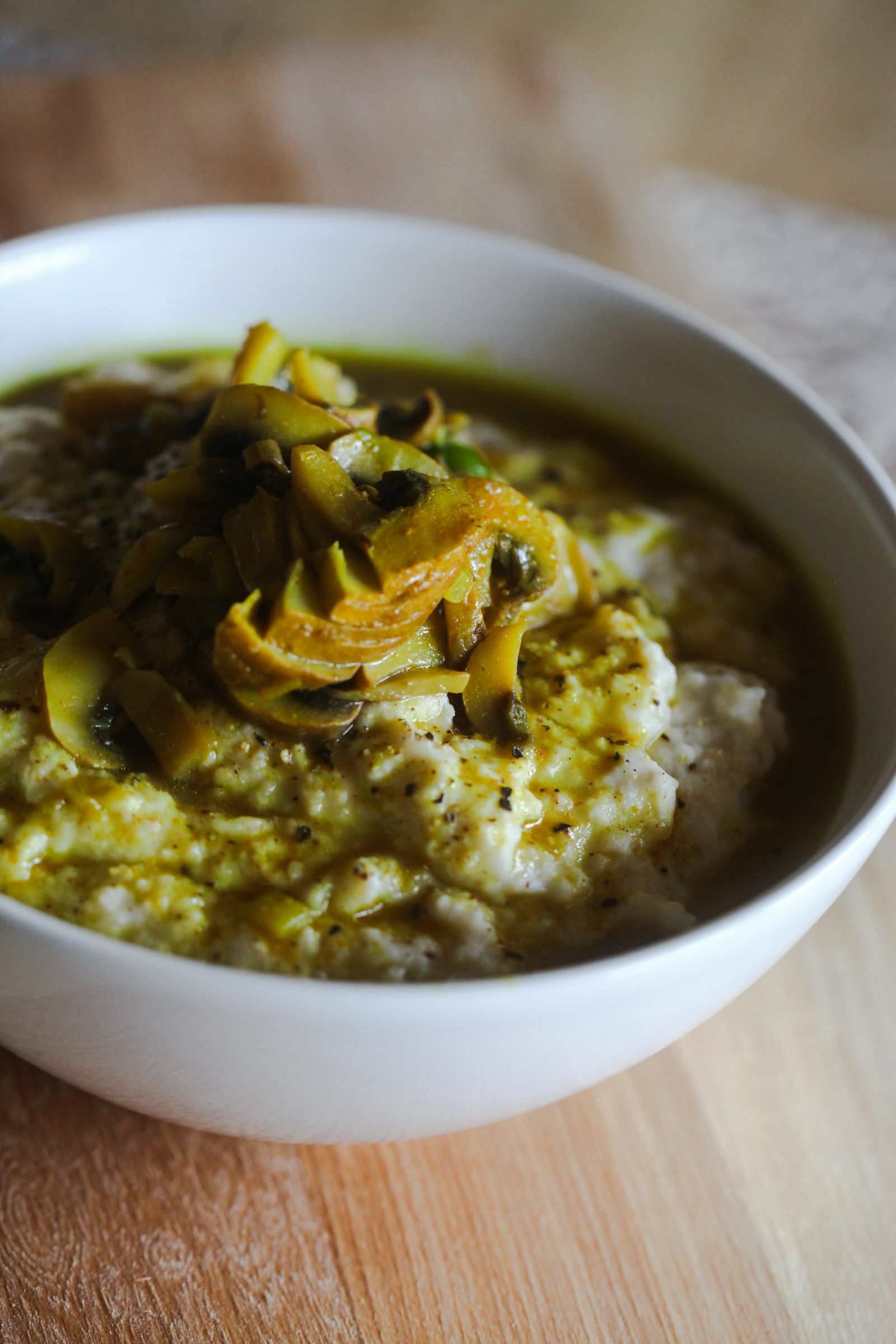Today we will focus on oat's properties and preparation, a nutritionally-rich cereal ideal to create both sweet and savory recipes. We will use oats to prepare one of the most popular breakfasts: porridge in three delicious sweet and savory variations.
Before going to recipes, let's find out more about this wonderful cereal!
Oat properties
Oat (Avena sativa) is grown in cold, temperate climates of northern Europe, Russia and some areas of Asia.
In the past, oats were mainly used to feed horses and livestock but, over time, they became part of human nutrition, reaching ever-growing popularity given by their numerous nutritional qualities and beneficial properties.

Rolled oat flakes
Starting from the outer layer, the bran, you can notice that oat grains are wrapped in numerous layers, about 20-40% of its total weight. External kernel layers are so adherent to the endosperm that they are extremely difficult to separate during oats processing. This means that we can define oat as an integral cereal with a high vegetable fiber content.
This feature makes oat valuable for:
- preventing high blood cholesterol,
- promoting intestinal transit,
- as an ally of the line in low-calorie diets.
Being a high nutritional value cereal, 100g of oats provide about 400kcal. The carbohydrate content per 100g is between 60-70g, while proteins also have a very respectable presence representing about 12-14% of nutrients.
Oat is characterized by a high biological value since it contains a good number of essential amino acids, in particular, lysine, which exceeds the amount contained in wheat by 5%.
The fat content is also quite high compared to other cereals (6.5-8%), but oat's lipids are healthy essential fatty acids (linoleic acid and linolenic acid), the ones responsible for the high energy value of this cereal.
Rich in minerals and vitamins, oat includes fat-soluble vitamins such as vitamins A, D, and E, in addition to B vitamins (B1, B2, and PP in particular) also typical of other cereals.
As for gluten, oat has a rather low glutelin (gluten-forming proteins) content but it contains gliadin (a protein responsible for celiac disease) therefore, for safety, it cannot be consumed by celiacs. However, on the market, it can also be found in the gluten-free version.
In any case, oats' natural gluten content is so low that oatmeal is not suitable for bread making, so much so that other more glutinous flours are often added to make bread, biscuits, cakes, and other baked goods.
On the market, you can find oats in the form of flakes, flour or grains.
3 Recipes to prepare porridge
Let's see how to use oats to prepare porridge (or oatmeal) in its classic, warm, sweet and creamy version ideal for breakfast or as a snack, in its cold "overnight oats" version, perfect in the summer, and as a savory first course.
All recipes are high protein and with no added sugar.
1. OATMEAL PORRIDGE - CLASSIC RECIPE

Credits: Le Fit Bistrot
Ingredients
- 40 g Oat flakes + 10g Oatmeal (or 50g of flakes only)
- 100 ml vegetable milk with no added sugar (or cow's milk)
- 200 ml water
- 1 tablespoon of Greek yogurt or light cream cheese or ricotta
- Honey or sweetener (optional)
Method
This is a basic recipe that will allow you to make a creamy porridge. You can use it to create all the variations you want.
Put all the ingredients together in a saucepan. Leave to cook over medium-low heat, stirring occasionally. When it starts boiling, lower the heat and stir constantly to avoid sticking. When oatmeal is thick and creamy, just pour it into a cup and enjoy it hot.
Notes: you can make porridge even with water and oats, but it won't be so creamy! If you wish, you can omit the spoonful of ricotta or Greek yogurt but I still recommend using milk to get a good result.
Macros: C30g F6g P11.2g
2. PROTEIN OVERNIGHT OATMEAL
Ingredients
- 50 g Oat flakes
- 150 ml vegetable milk with no added sugar
- 1 scoop of whey
- Honey or sweetener
Method
Combine milk and sweetener in a cup. Bake at 900w for 3 minutes. Leave to cool at room temperature. Combine a scoop of protein powder (30g). Leave in the refrigerator overnight.
Remove from the fridge in the morning and flavor to taste with fresh fruit, seeds, dried fruit, peanut cream for a quick and nutritious breakfast on-the-go!
Macros: C28g F7g P 37g
3. SALTY PORRIDGE

Credits: Le Fit Bistrot
Ingredients
- 50 g oat flakes
- 250 ml water
- 250 g egg white
- 1 small portion of soft cheese
- 1 tablespoon of parmesan
- 50g mushrooms
- 1 shallot
- Salt, pepper, chives, turmeric, curry
Method
First, wash mushrooms and cut them finely together with the shallot. Cook them in a non-stick pan with a little water. Add turmeric, curry, salt. Cover with a lid and cook completely.
In a saucepan, put egg white, water, oats, salt. Leave cooking over medium-low heat, stirring occasionally. Add the soft cheese and pepper. When it starts boiling, lower the heat and stir constantly to avoid sticking to the bottom. Add a spoonful of Parmesan. When the porridge is thick and creamy like risotto, just pour it into a bowl, add mushrooms and serve hot. Et voilà! The first course is served.
Macros: C 33g F 12g P 41g
Conclusions
Oats are undoubtedly an ally for our health and also a super versatile ingredient that can give your dishes an extra boost. In the IAFSTORE online store, you will find many types of oats.
I suggest you buy baby flakes with a neutral taste because they are perfect for both sweet and savory recipes. The same applies to neutral-flavored oatmeal. Then try out some flavored variants to experiment further!
Follow @iafstore and @lefitbistrot on Instagram to not miss other Healthy Recipes!
